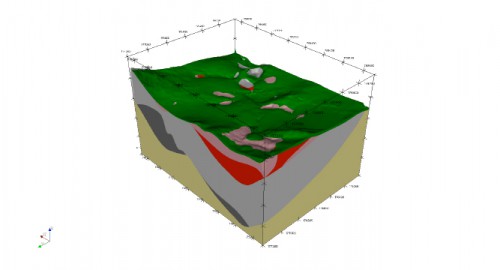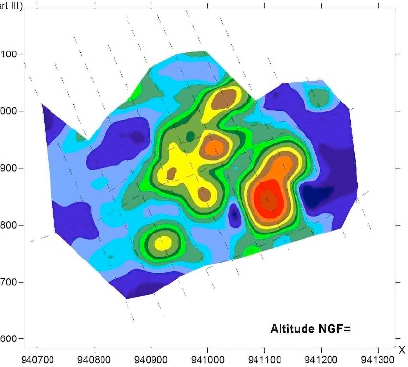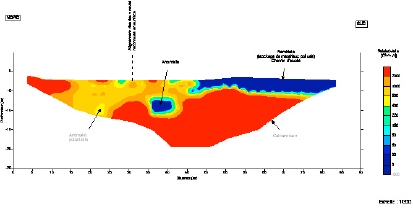Result supplied
The different electrical methods allow the distribution of apparent resistivity to be obtained either at a point (probing) or on a cross-section (panel). The spontaneous potential method can be used to determine water flows in the soil. Induced polarisation can provide information on the ability of the soil to be loaded and therefore indirectly on its clay content. Investigation in depth Down to 300-400 metres.
Applications
- Quarries: estimation of the volume and the quality of the deposits, localisation of clayey zones, determination of fault zones, etc.
- Hydrology Search for underground water, determination of the thickness of aquifers, search for furrows, etc.
- Civil engineering: determination of fracturing, of fault zones, of the presence of clay, search for lithological contact, etc.
- Environment: mapping of the contaminants layer, search for full cavities, etc.
- Quarries: estimation of the volume and the quality of the deposits of alluvial materials, localisation of clayey zones, thickness of the discoveries, etc.





